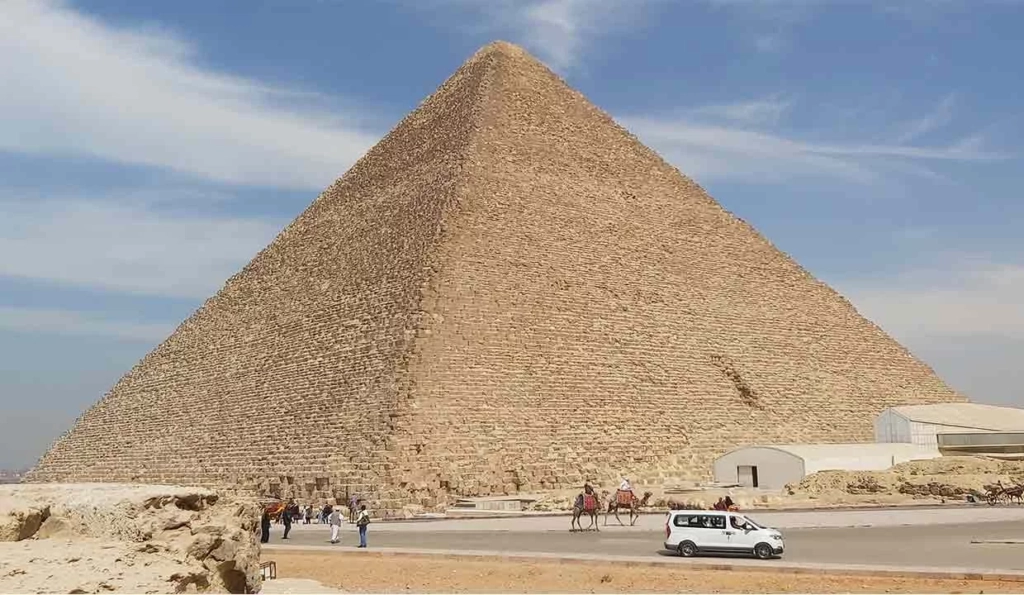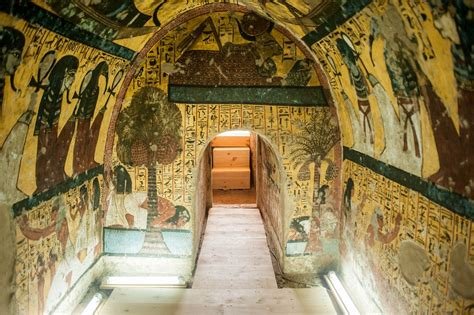Dive into Egypt’s rich history—explore Giza’s pyramids, Luxor’s temples, pharaohs’ tombs, and the vibrant life in ancient cities. Discover and preserve heritage.Egypt beckons not just with its timeless pyramids and vast deserts but with the whispers of its ancient civilization; a culture so profound that its echoes are still felt in the very soil of its cities. Our journey to cultural immersion in the ancient cities of Egypt is one that transcends mere sightseeing—it is a gateway to understanding the nuances of a civilization that has shaped history. From the imposing Pyramids of Giza to the enigmatic temples of Luxor, this blog post voyages through Egypt’s majestic past, offering a glimpse into the lives of the Pharaohs through their tombs and the persistent vibrancy of local life that continues to color these historical landscapes. As we delve deeper into each element—from grand structures to daily customs—not only do we uncover Egypt’s cultural richness, but we also explore the significance of preserving this heritage. Join us as we unearth the stories etched in stone and sand, and retrace the steps of ancient Egyptians in their storied cities.
Understanding the Ancient Egyptian Culture

Ancient Egyptian culture is a tapestry woven with a rich palette of religious beliefs, social structures, and artistic expressions that have fascinated historians and laypersons alike for centuries. The civilization that thrived along the verdant banks of the Nile River predates many others, offering a glimpse into one of the most intricate societies of human history. Its enduring legacies include architectural marvels, intricate hieroglyphs, and a pantheon of deities that reflect the ancient Egyptians’ deep connection to the afterlife and the cosmos.
Delving into the complexity of this culture, we find that the social hierarchy played a pivotal role in the everyday life of Ancient Egyptians. At its helm stood the Pharaoh, considered both a king and a god, his authority undisputed and grand. This hierarchy trickled down to the viziers, priests, scribes, and artisans, ending finally with the farmers and slaves. This structure was underpinned by the belief that harmony and order, concepts embodied by the goddess Ma’at, were crucial for the sustenance of the universe and society.
The religious beliefs of the ancient Egyptians were centered around polytheism, with gods and goddesses overseeing various aspects of natural and societal order. Temples dotted acrossEgypt served as the nexus points for religious activity, where rituals and offerings were conducted to appease these deities. One cannot speak of Ancient Egyptian culture without mentioning the elaborate practices surrounding death and the afterlife, which led to the creation of monumental tombs, the conduct of intricate mummification processes, and the rich funerary texts like the Book of the Dead.
Beyond the towering pyramids and grandiose temples, the artistic flair of the Ancient Egyptians manifested in their jewelry, pottery, and paintings. Craftspeople and artists employed symbolic representations and a combination of geometric precision and creative talent to produce works not merely meant for aesthetic pleasure but to serve functional, ceremonial, and symbolic purposes. Their art and artifacts provide us with invaluable insights into the daily life, beliefs, and history of a culture that continues to influence and awe the world today.
Exploring the Magnificent Pyramids of Giza

The Pyramids of Giza stand as a testament to the ingenuity and mystery of Ancient Egyptian civilization. These marvels of ancient architecture continue to impress scholars and travelers alike with their enormous scale and precision, suggesting a sophisticated understanding of mathematics and construction techniques. The largest of them, the Great Pyramid of Khufu, is an awe-inspiring structure that was once the tallest man-made structure in the world, serving not only as a tomb but also as a powerful statement of the Pharaoh’s wealth and influence.
Diving deeper into their construction, it becomes evident that the Pyramids were feats of human achievement. Huge limestone blocks, each weighing many tons, had to be transported across significant distances and precisely placed to create the iconic pyramid shape. Theories suggest that a combination of sledges, ramps, and perhaps even water-based lubrication methods were used to facilitate this massive undertaking—a process which, even today, incites debate and further research among historians and archaeologists.
Circling the periphery of these ancient wonders are the smaller satellite pyramids, the Great Sphinx, and various tombs and temples that create a grand necropolis, a city of the dead. Each structure within the Giza Plateau presents a piece of the puzzle in understanding old kingdom Egypt, its religious beliefs, social structures, and the daily life of its inhabitants. The intricate art and hieroglyphics found within these structures form an invaluable source of information, shedding light on the ceremonies, rituals, and cultural importance these monuments held for the Egyptians.
Encouraging a visit to the Pyramids of Giza is akin to inviting history enthusiasts to walk in the footsteps of the ancient builders. Daily, the pyramids cast their long shadows over the desert sands, perhaps as a symbol of the enduring legacy of the pharaohs. They continue to influence modern-day culture and spark curiosity, keeping the Ancient Egyptian spirit alive in the collective memory of civilization. To truly grasp the meaning and ingenuity behind these structures, one must stand beneath their towering presence and gaze upon the precision of their alignment with the stars.
Unveiling the Secrets of Luxor’s Ancient Temples

Stepping into the vast open-air museum of Luxor is like being transported back through the mills of time, where each stone whispers tales from a civilization that has captivated humanity for millennia. The ancient temples of Luxor, once known as Thebes, stand majestically against the backdrop of modernity, their secrets hidden within hieroglyph-covered walls and colossal pillars. As we unveil the secrets of these sacred structures, we come face-to-face with the ingenuity and spirit of the ancient Egyptians, whose architectural prowess continues to astonish contemporary observers.
Among the most bewildering of Luxor’s sanctuaries is the Karnak Temple, a complex so vast and intricate that it remained a work in progress for many of Egypt’s pharaohs, each adding their own touch to this grand monument to the gods. The scale of its Great Hypostyle Hall, with 134 gigantic columns, testifies to the grandeur of the ancient religion and the splendor of its ceremonies. As the sun casts elongated shadows between the pillars, one can almost hear the echoes of ancient priests chanting hymns to Amun-Ra, the King of Gods.
The mortuary temple of Queen Hatshepsut, delicately carved into the limestone cliffs of Deir el-Bahri, reveals another facet of Luxor’s divine canvas. Here, the story of a formidable woman who rose to rule as a pharaoh unfolds, challenging traditional gender roles of the era. Her temple, a masterpiece of harmony and proportion, stands as a testament to her reign and showcases the extraordinary contributions women made to ancient Egyptian society. The temple’s relief carvings and statues still hold mysteries of ancient religious practices and royal propaganda.
Meanwhile, the Luxor Temple, gracefully aligning itself with the river Nile, reveals insights into the religious celebrations and social life of ancient Egyptians. The annual festival of Opet, where gods and mortals mingled in a grand procession, is etched in the temple’s narrative reliefs. The temple, aptly dubbed the southern sanctuary, was intricately connected with Karnak and once was linked by the Avenue of Sphinxes. As evening descends and the temple lights ignite, it transforms into a luminous stage that continues to host the stories of deities and their devout believers, preserving the legacy of a civilization both enigmatic and enchanting.
Delving into the Intriguing World of Pharaohs’ Tombs

The ancient tombs of the Egyptian Pharaohs have long held the fascination of historians, archaeologists, and tourists alike. Buried within these ancient chambers are not only the remains of the pharaohs themselves but also a wealth of treasures and inscriptions that offer a glimpse into a civilization that has long ceased to exist. The intricate art and hieroglyphs adorning walls tell tales of power, belief, and eternity, reflecting an ancient society’s preoccupations with the journey to the afterlife.
Among these subterranean wonders, the enigmatic Valley of the Kings stands out as a testament to the incredible efforts the ancient Egyptians invested in the afterlife. Each tomb was carved deep into the rock, designed to be a palace for the eternity. These necropolises were equipped with all the necessities, as the Egyptians believed that their earthly possessions could follow them into the next world, thus they buried their rulers amidst a splendor meant to accompany them to the great beyond.
Studying the tombs’ hieroglyphs and funerary art provides us with valuable understanding of the Egyptian world; for instance, the Book of the Dead—a guide to the afterlife filled with spells and instructions—was often found within royal tombs, its verses and scenes decorating sarcophagi and walls. These inscriptions offered the deceased guidance on navigating the challenges they would face after death, ensuring their safe passage and acceptance into the ever-after.
The legacy of the pharaohs’ tombs is not only an archaeological marvel but also a bridge to our past. When we delve into the sepulchres of the kings, uncovering the ancient charms and sacred texts, we step closer to understanding the breadth of the Egyptian civilization’s contribution to human history. Each chamber, corridor, and tomb reveals a fragment of the story of mankind, with its beliefs, artistry, and the eternal quest to delineate life beyond the mortal realm.
Experiencing the Vibrant Local Life in Ancient Egyptian Cities

Walking through the bustling streets of Ancient Egyptian cities was an experience that engaged all senses, with the vivid colors of merchants’ stalls and the rich scents of spices and incense mingling in the air. One could not help but feel the vibrancy of life where the ancient civilization thrived, revealing a society steeped in complexity and sophistication. Marketplaces were once brimming with vibrant textiles and pottery, each piece telling its own story of craftsmanship and daily existence within this dynamic culture.
The social structure of Ancient Egyptian cities was both intricate and fascinating, with a hierarchy that ranged from the mighty Pharaoh down to the humble workers and slaves. Despite the stratifications, communal life in ancient Egypt was interwoven with public events and religious ceremonies, which showcased the cities’ spirit and the inhabitants’ deep connection with their deities. Such gatherings were pivotal, not only in reinforcing social cohesion but also in ensuring the flow of life adhered to the spiritual beliefs and cosmic order that the Egyptians held in high regard.
Each city in ancient Egypt offered a distinctive atmosphere—while Thebes was known for its majestic temples and vibrant religious festivals, a city like Memphis was a hub for administration and craftsmanship. Along the Nile, the life-giving river provided a natural focal point for commerce, travel, and agriculture, positioning the riverbank as a lively centerpiece for local life. It was at the heart of these cities where politics, economy, and spirituality intertwined seamlessly, fostering a civilization ahead of its time in various facets of urban development and community life.
To truly understand the activities and daily rhythms within these ancient metropolises, one must delve into the artifacts and architectural remnants that have withstood the test of time. The ruins of homes, temples, and marketplaces provide a silent yet potent narrative of the vibrant local life that once pulsated through their streets. Whether through recorded hieroglyphics or the meticulous accounts of historians, the stories of these long-gone urban centers continue to captivate and enlighten those eager to explore the depth of Ancient Egyptian culture.
Preserving and Promoting Cultural Heritage in Egypt

Egypt’s commitment to preserving its vast cultural heritage is pivotal, not only for its national identity but also for humankind’s collective history. The cultural heritage of Egypt is a luminous tapestry woven with threads of ancient civilization, mythology, and incomparable archaeological treasures. Thus, safeguarding such a rich legacy involves intricate conservation techniques, unwavering vigilance against illicit artifact trade, and continuous efforts to restore and rehabilitate ancient monuments. These endeavors ensure the endurance of Egypt’s historical narrative for future generations while enhancing global understanding of its cultural magnificence.
Key to promoting Egypt’s heritage is harnessing the power of modern technology and media. Virtual reality experiences and sophisticated digital reconstructions invite global citizens to step into the world of the pharaohs, broadening awareness and sparking a keen global interest. This interest, in turn, catalyzes support for preservation initiatives. Similarly, knowledge-sharing collaborations between Egyptian experts and international institutions further cement the global significance of Egypt’s historical contributions. Such partnerships are essential in the monumental task of chronicling and maintaining the integrity of ancient sites in the face of environmental and human challenges.
The Egyptian Ministry of Antiquities plays a central role in these preservation efforts through stringent policies and educational programs designed to foster a sense of pride and custodianship among local communities. Community engagement in cultural heritage projects not only democratizes the process of preservation but also stimulates a sustainable, culturally enriched tourism industry. It’s a synergistic relationship wherein awareness and appreciation lead to economic gains, which then recycle back into funding further preservation efforts—a virtuous cycle that benefits all stakeholders.
Lastly, international acknowledgement through platforms such as UNESCO’s World Heritage Sites brings much-needed attention and resources to the cause. It empowers Egypt to showcase its spectacular ancient sites while rallying global effort to protect them. The act of preserving Egypt’s cultural patrimony thus isn’t just a national duty; it’s an international calling where collaboration transcends borders, ensuring that the timeless tales etched in Egypt’s monuments, artifacts, and cultural practices are told and retold for eons to come.
Frequently Asked Questions
What is ‘cultural immersion’ in the context of visiting ancient Egyptian cities?
Cultural immersion refers to the process of deeply engaging with the local culture, customs, and history of ancient Egyptian cities beyond typical tourism. It involves actively learning about and participating in the local lifestyle, gaining insight into ancient practices, and understanding the significance of historic sites.
What are the ‘Magnificent Pyramids of Giza’ and why are they significant?
The Magnificent Pyramids of Giza are a collection of three pyramid complexes, which include the Great Pyramid of Khufu, the Pyramid of Khafre, and the Pyramid of Menkaure. They are significant as they are one of the Seven Wonders of the Ancient World and are remarkable achievements in ancient engineering and architecture, representing the zenith of Ancient Egyptian power and religious beliefs.
Can you uncover a mystery that lingers around Luxor’s ancient temples?
One of the enduring mysteries of Luxor’s temples is the precise purpose and meaning behind the extensive and intricate wall carvings and hieroglyphs. While many have been translated and offer insights into ancient religious rituals and pharaonic history, some symbols and texts still leave historians and Egyptologists speculating about their full implications and meanings.
How do pharaohs’ tombs provide insight into Ancient Egyptian civilization?
Pharaohs’ tombs are rich with art, hieroglyphics, treasures, and architecture which all provide valuable insights into the daily life, beliefs, religious practices, and social structure of Ancient Egyptian civilization. The tombs were meant to ensure the pharaohs’ immortality and provide for them in the afterlife, reflecting the culture’s views on death and the afterlife.
What unique experiences might one encounter while experiencing local life in Ancient Egyptian cities?
Experiencing local life might include visiting traditional markets and bazaars, sampling authentic Egyptian cuisine, participating in local festivals, and observing traditional crafts and trades. It also could involve interaction with local communities, learning Arabic phrases, and understanding contemporary life amidst ancient settings.
Why is preserving cultural heritage crucial for places like Egypt?
Preserving cultural heritage in Egypt is crucial for maintaining the country’s unique identity, ensuring the endurance of its rich history for future generations, and continuing to support educational research. It is also vital for sustainable tourism, which relies on these historical sites’ integrity and authenticity to attract visitors from all over the world.
How can tourists promote cultural heritage while visiting ancient sites in Egypt?
Tourists can promote the cultural heritage of Egypt by respecting and following local guidelines for conserving sites, not damaging or removing artifacts, and supporting local conservation efforts. Additionally, they can contribute by educating themselves on the history and significance of the places they visit, engaging with local guides and communities, and spreading awareness of the importance of preservation.


